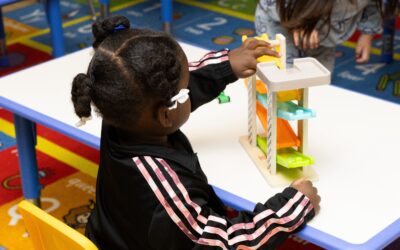Communication is nothing short of complex. Be it the methods in which we communicate, the subject of our message or how we communicate the message- there are seemingly endless variables involved. Now, factor in a neurodevelopmental disorder and the complexities grow even larger. People on the autism spectrum, especially children, may experience a variety of challenges as they learn to communicate with their peers. In this post, we’ll discuss social communication as it relates to children on the autism spectrum.
Social Communication Defined
What differentiates social communication from any other type of communication is its context. When you are communicating with peers or the public in an environment designed for that interaction, you are engaging in social communication. Neurotypical people tend to engage in and learn this type of communication through schooling and extend that into adulthood with their careers and in more casual social settings.
Children on the autism spectrum tend to experience social communication differently, and can have much more difficulty picking up on social cues and pragmatics that would otherwise indicate changes in tone or shifts in subject matter to their neurotypical peers. Many children on the spectrum also have a hard time making eye contact or answering questions.
Challenges of Social Communication
Since children on the spectrum process information differently, they can encounter some severe challenges when learning social communication. A few of the most common include:
- Difficulty verbalizing thoughts or delays in complex sentence formulation.
- Issues with general language skills and vocabulary.
- Inability to read social cues and in turn, inability to grasp pragmatics and prosody when speaking in social settings.
- Avoiding eye contact.
- Difficulty reading non-verbal cues and language.
- Difficulty displaying non-verbal cues.
- Challenges with attention and responding appropriately when addressed.
Overcoming the Social Communication Challenge
While no two people on the spectrum are the same, many individuals with autism learn to succeed in social communication, even taking it a step further by strengthening this skill as a career tool. The two biggest factors in overcoming this challenge are therapy and practice.
When it comes to therapy, early intervention is key and can be crucial for children who are struggling with communication and behavior. The Place for Children with Autism’s Applied Behavior Analysis (ABA) therapy programs are individualized to help children on the spectrum learn new, productive behaviors that support their development while also building on strategies of success for all types of communication. Center-based treatment also exposes children to a social and safe setting for them to practice these strategies with their peers and therapists.
For more ABA and autism related news and tips visit our blog and follow us on Facebook, Instagram, and Twitter! If you have questions regarding ABA therapy services or you’re interested in visiting one of our locations, don’t hesitate to reach out to us on our contact page. We’re always here to answer your questions and support your family’s needs as best as we can.



